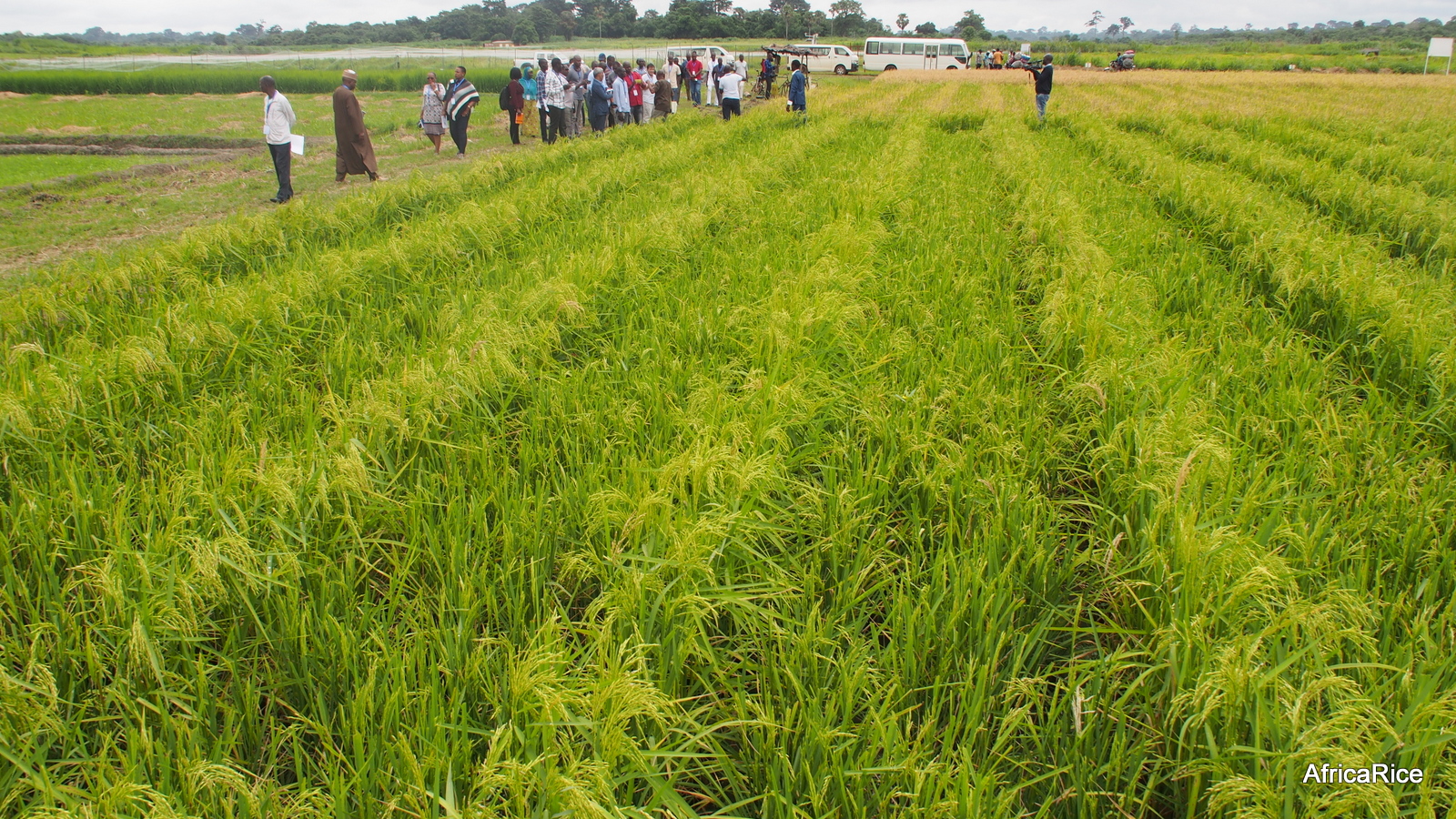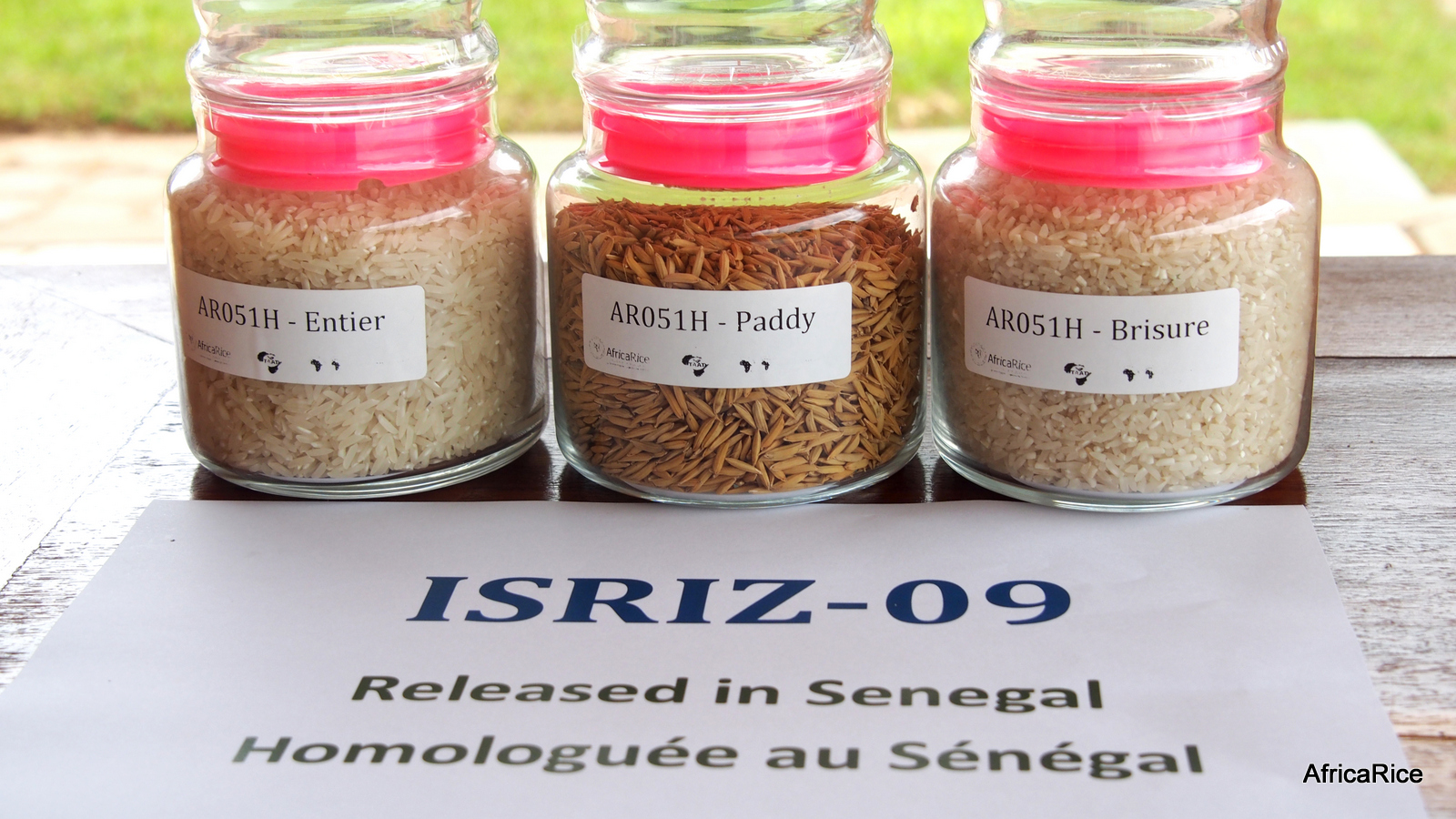Aromatic Rice for Africa (ORYLUX varieties)
Summary
The excellent flavour and texture of aromatic rice varieties make it very popular with consumers and give it a larger market value than traditionally cultivated types of rice that are less palatable. Production of aromatic rice by countries in Sub-Sahara Africa (SSA) is really low and does not come near to fulfilling the demand from populations, what brings about major dependencies on importations from Asia. The main reason why SSA isn’t more self-reliant is because farmers have very limited access to seed materials for aromatic rice varieties that are adapted to prevalent growing conditions. In response to increasing consumer demand for fragrant rice, breeders from the Africa Rice Center (AfricaRice) have developed Oryza Sativa ‘ORYLUX’ varieties specifically for cultivation in agroecosystems of SSA, with non-chalky, translucent, slender, aromatic and early maturing characteristics that rival high-quality rice from other parts of the world. Further steps in dissemination and financing however need to be undertaken for making these aromatic varieties broadly available across rice growing communities in SSA. Drawing on a premium quality and price, higher degrees of profitability can be realized by cultivating aromatic rice than with less palatable varieties that are commonly grown, and thus gives rise to greater incomes for farmers and processing industry connected with the food value chain.
About the Solution
Premium aromatic rice varieties can be crossed with elite lines that are commonly grown in a region through conventional breeding techniques, while maintaining high yields and other beneficial agronomic traits in the process. Specific methods that overcome the low combining ability and heritability of ‘high yield’ traits between distant rice varieties enable breeders to create hybrid lines that are rich in aroma and taste, and offer farmers greater returns on investment than common, less palatable varieties. Genetic mapping and molecular tools make it possible to accelerate the breeding processes by targeted recombination of varieties with premium, sought after qualities. The selection of ORYLUX rice that was released by AfricaRice has been conventionally bred from West-African an elite landrace ‘Gambiaka’ and varieties from dry sub-humid parts of the Sahel, via crossing with a premium type of aromatic rice from Pakistan. Widespread testing on smallholder farms in SSA demonstrates that ORYLUX varieties possess a high yield potential, and moderate to high resistance to widespread microbial diseases, and insect and nematode pests. Gaps in aromatic rice production across SSA can be rapidly closed by making seed from ORYLUX varieties more available for rice growers on local markets, and ensuring offtake by food processors through virtual market place applications so its added value is fully capitalized on.
ORYLUX varieties offer a viable strategy for increasing the production of aromatic rice in all major growing areas of SSA because their traits are adapted to specific agricultural conditions as a result of cross-breeding with elite landraces. The selection of ORYLUX rice that has been developed by AfricaRice is suitable for rain-fed systems but perform best in lowland valleys or with added irrigation. It is possible to develop ORYLUX varieties for new environments at low cost thanks to the conventional breeding upon which the technology is based. Seed from premium aromatic can be made available at large scale to rice growers through community-based and commercial seed supply chain systems that currently exist. Farmers growing premium quality rice need to have access to fresh markets or processing facilities for turning the higher value of the crop into cash, which typically requires broader interventions that connect actors in the agri-food production chain.
A series of aromatic rice varieties with different water requirement and yield potential was released by AfricaRice that suit particular types of production systems in major growing areas of SSA. ORYLUX 1 reaches a grain harvest of 8 ton/ha in intensively managed and irrigated lowland paddies, and has been successfully taken up by farmers from Togo and Uganda. ORYLUX 6 has a potential grain yield of 6.5 ton/ha on rain-fed paddies in lowland valleys (higher when irrigated), reaches maturity in 100 days offering the possibility of double cropping, and is also fairly tolerant to prevailing diseases like blast. This specific variety of the ORYLUX series is especially popular in Benin, Burkina Faso, Cote d’Ivoire, Liberia, Senegal and Togo. A total of 23 aromatic varieties are available that target irrigated lowlands in the Sahel region of West Africa, like Sahel 108, Sahel 134, Sahel 202, Sahel 305 which have mean expected yields of 6 to 7 ton/ha. Recently, an aromatic hybrid (AR051H) was released in Senegal that has a yield potential of 9 ton/ha on smallholder fields and milling recovery of 80%.
ORYLUX varieties are cultivated in the same way as any type of rice. Fields are planted manually or mechanically by sowing seed directly in the fields (drill/dibble/broadcast), or through transplantation of seedlings from seedbeds into fields which requires additional labour but is very effective in controlling weeds. In order to satisfy crop nutrition and reach desired grain yields of ORYLUX varieties there is need for applying mineral fertilizer and animal manure at recommended dosage, managing soil water contents through construction of low embankments around paddies, and controlling weeds through manual removal, mulching and chemical agents.
Commercialization
Commercially available
Solution Images
Institutions

Accompanying Solutions
Deep urea placement (nitrogen management), Engineered irrigation surface (water lifting), Foliar nutrient addition, Motorized weeders


